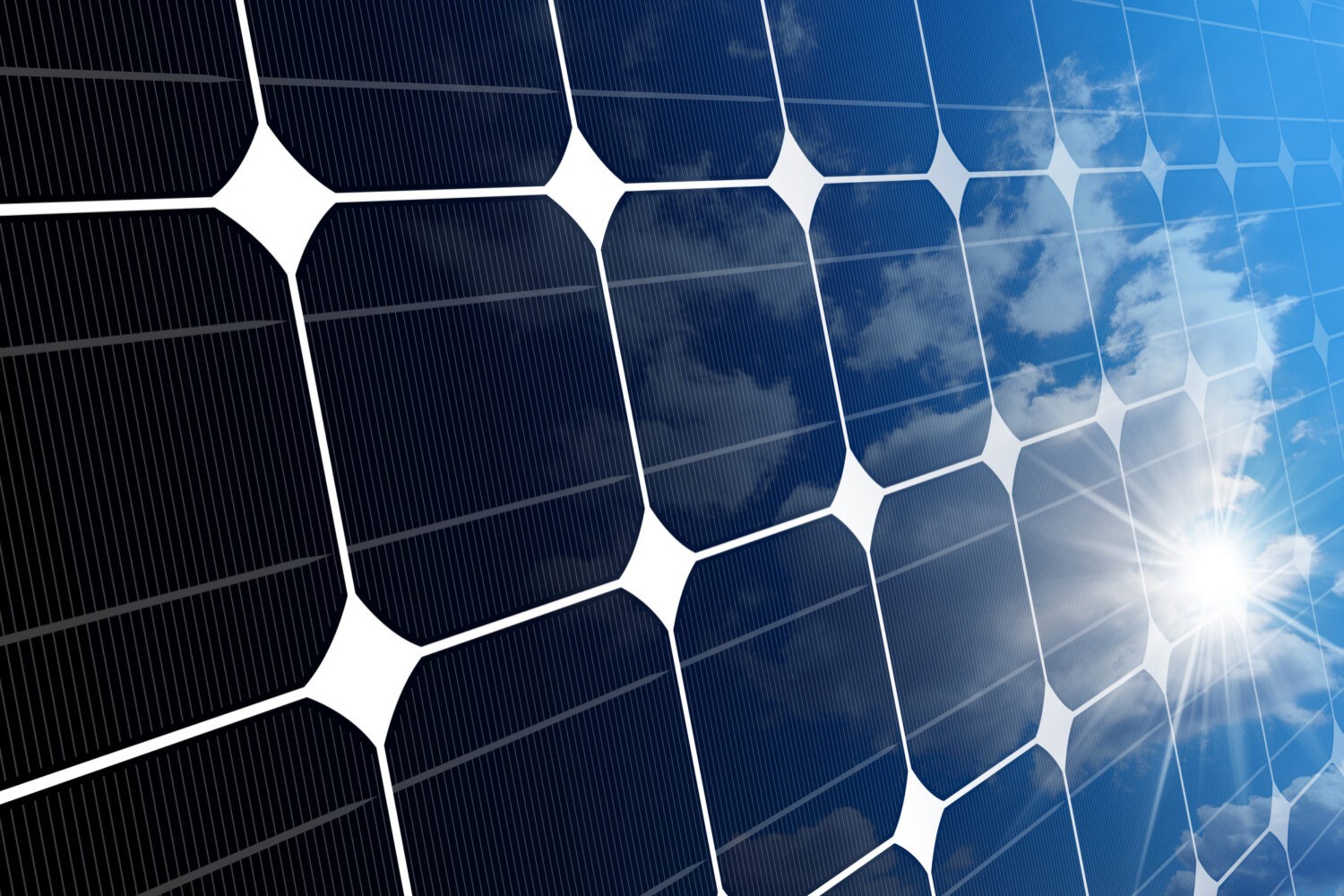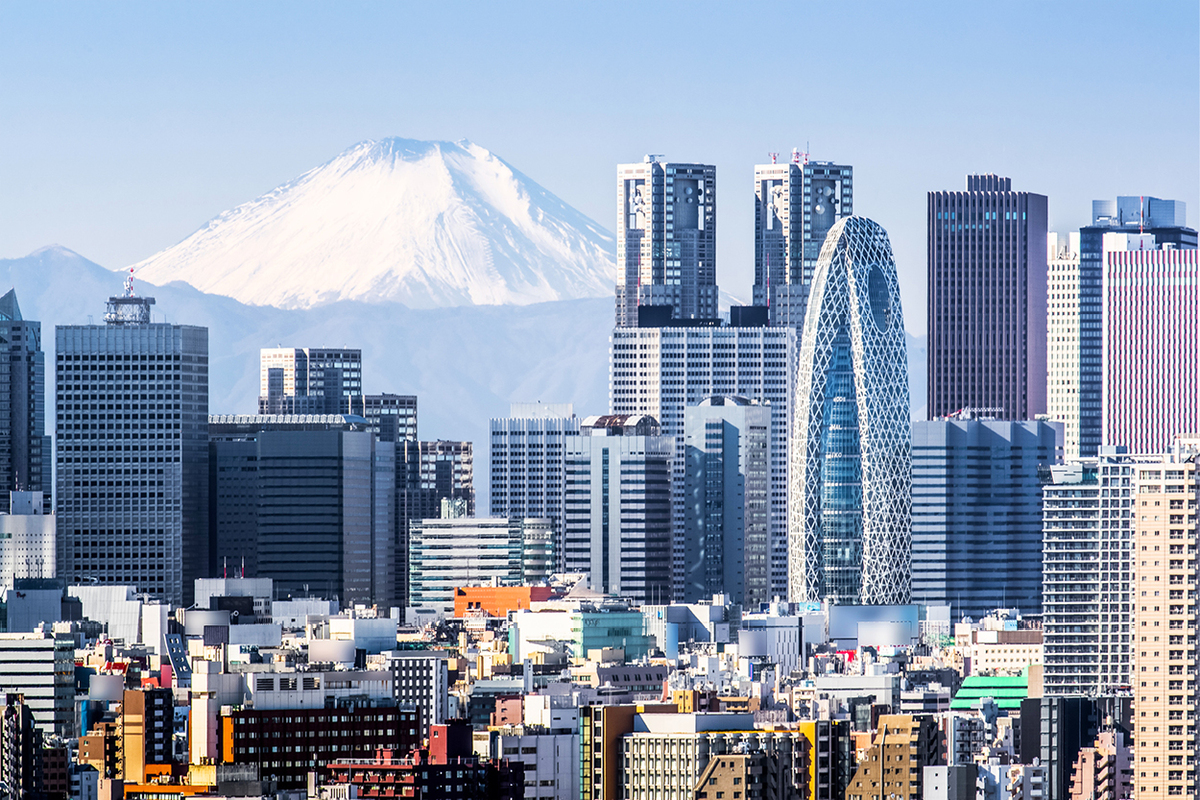
A new energy in Japan
Green, hydrogen, ammonia and nuclear
Japan’s Green Growth Strategy aims at achieving net zero emissions of greenhouse gases by 2050, alongside big investments for industries. In October 2020 Prime Minister Yoshihide Suga presented his energy plan to the press, expecting to realize a carbon neutral society by 2050.
Japan is the world’s fifth-biggest emitter of CO2 and the plan will aim at converting Japan’s supply and power policies radically, both on domestic and industrial level.
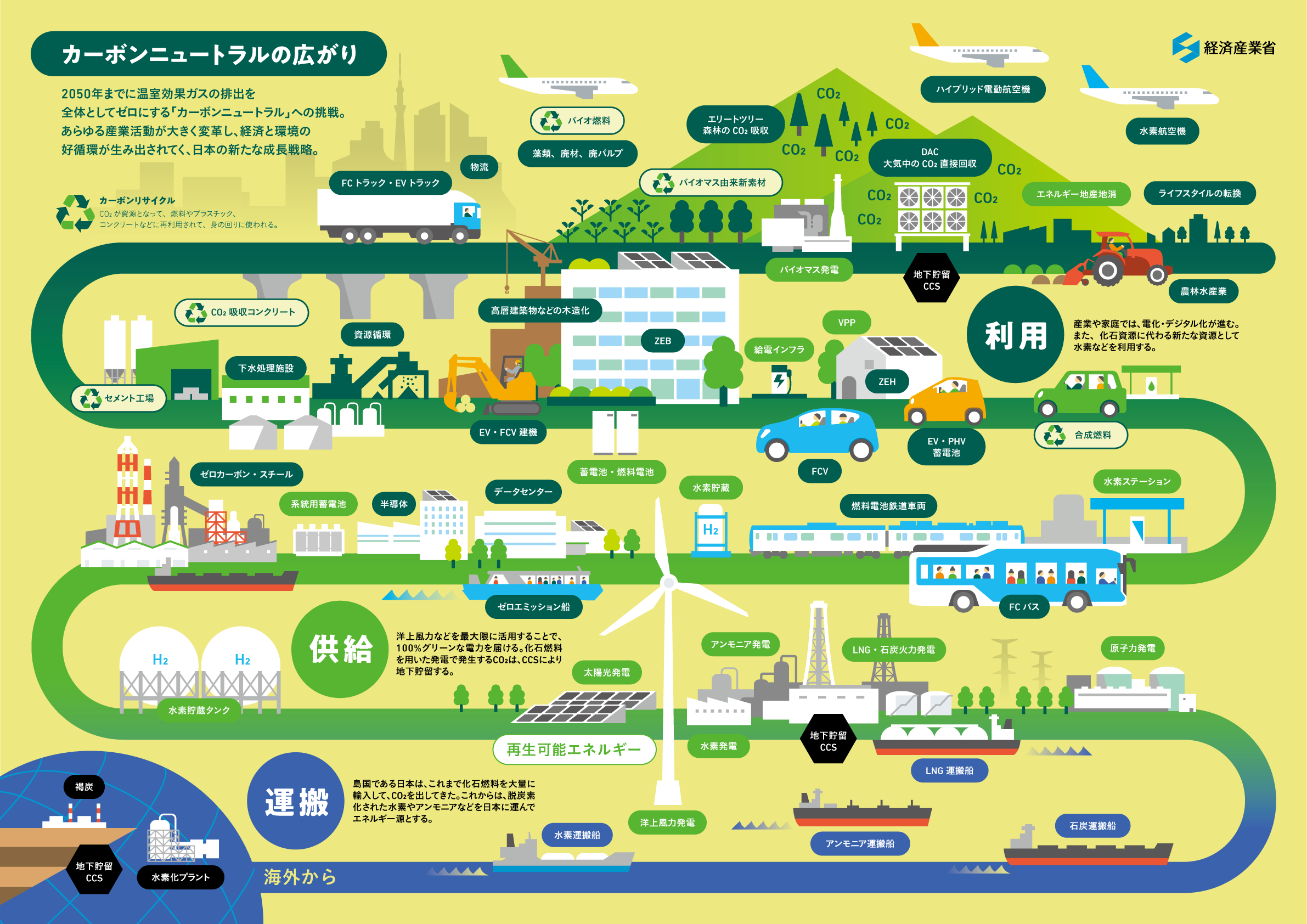
One of the charts released by the Japanese government introducing the Green Growth Strategy
It will be a revolution that will lead Japan to be powered by 2050 for 50-60% by renewable sources like off-shore wind energy, for 30-40% by new nuclear technologies and for 10% by specific new sources and technologies.
The industrial sector will be probably the most affected by this revolution. Some companies look positively at the change of direction, ready to focus on new sources that will reduce both costs and emissions. Among these, hydrogen and ammonia represent the ultimate challenge.
Japan aims at achieving net zero emissions of greenhouse gases by 2050
Considered as alternatives sources with great potential, the Government is already taking big measures to face any problems. It plans to dilute ammonia with carbon to make existing plants operating with low CO2 emissions. Widely used in many countries all over the world, Japan has planned a massive increase in imports, from the current 200.000 tons to approx. 20 million.
Jera, Japan’s third-biggest energy producer, considers it a fundamental step to convert its carbon plants.
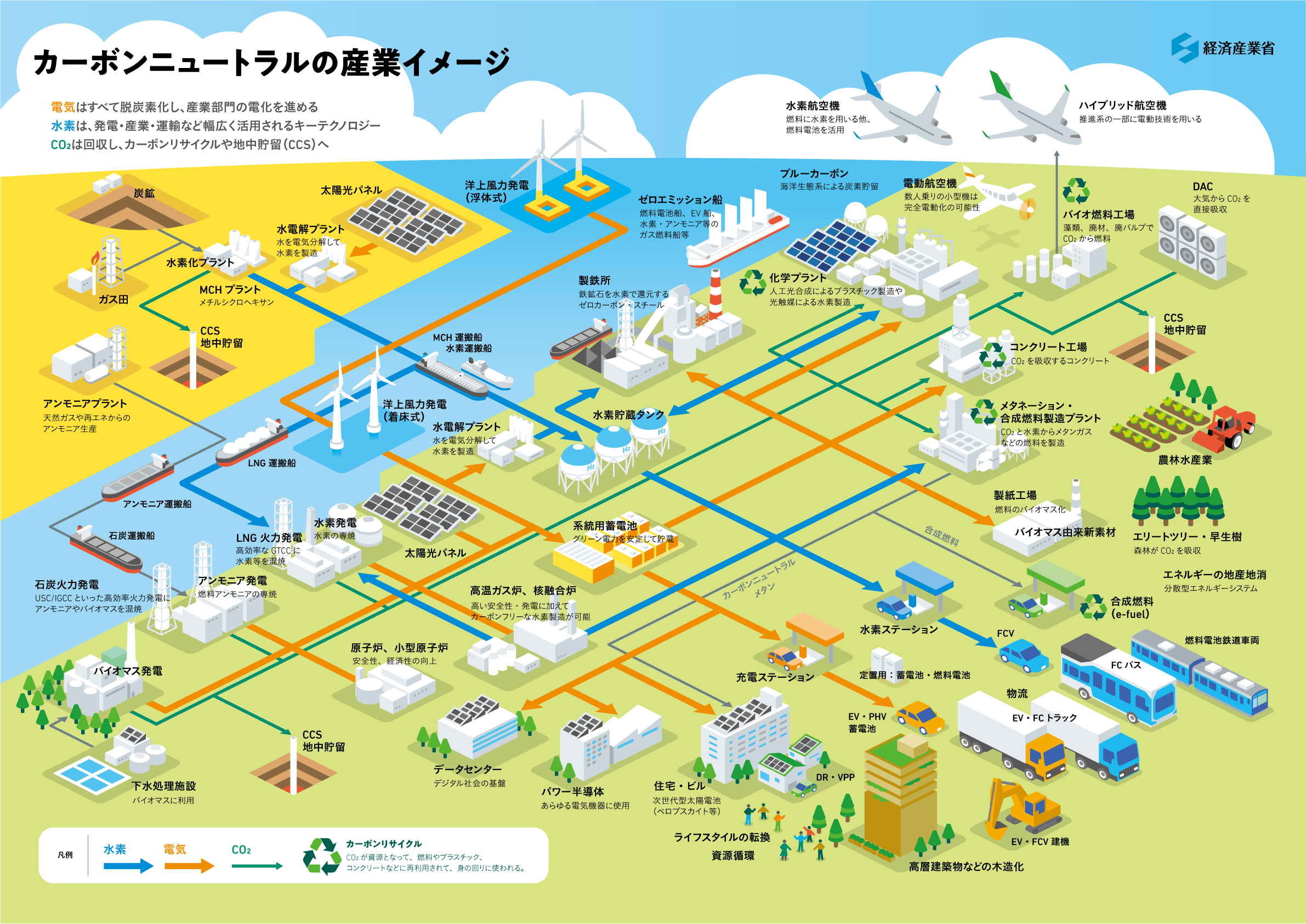
One of the charts released by the Japanese government introducing the Green Growth Strategy
One of the big problems is that ammonia is a toxic gas, extracted from natural gas and oil processing. The current technology doesn’t guarantee full reduction of CO2, although new processes are being studied. Japan has recently purchased a green version from Araby, which is the only country which has largely invested in green energy.
As for hydrogen, things are different. Industries use three types of hydrogen – grey hydrogen, extracted from carbon; blue hydrogen, extracted from fuels (usually natural gas) and green hydrogen, produced through electrolysis and considered the most sustainable type. Today grey hydrogen is the most economically convenient one, but it releases 18-20 kg of CO2 for every kg of H2 produced.
The industrial sector will be the most affected by the plan. Hydrogen and ammonia represent the ultimate challenge
Blue hydrogen market doesn’t take off because of the grey type, which is much cheaper. Green hydrogen, the only one completely renewable, can be produced only in places where renewable energies at accessible costs are available.
Mitsubishi Heavy Industries is one of the few companies now investing in the sector and it is already experimenting hydrogen energy production in one of its plants in Utah. Kentaro Hosomi, Executive Vice-President, said that for now the plant “will produce electricity from a mixture of hydrogen and natural gas. But it will burn only hydrogen starting from 2045.”
Japanese Government is showing a strong interest for this energy source. The goal is to use 10 H2 million tons by 2030, financing new projects and facilities.
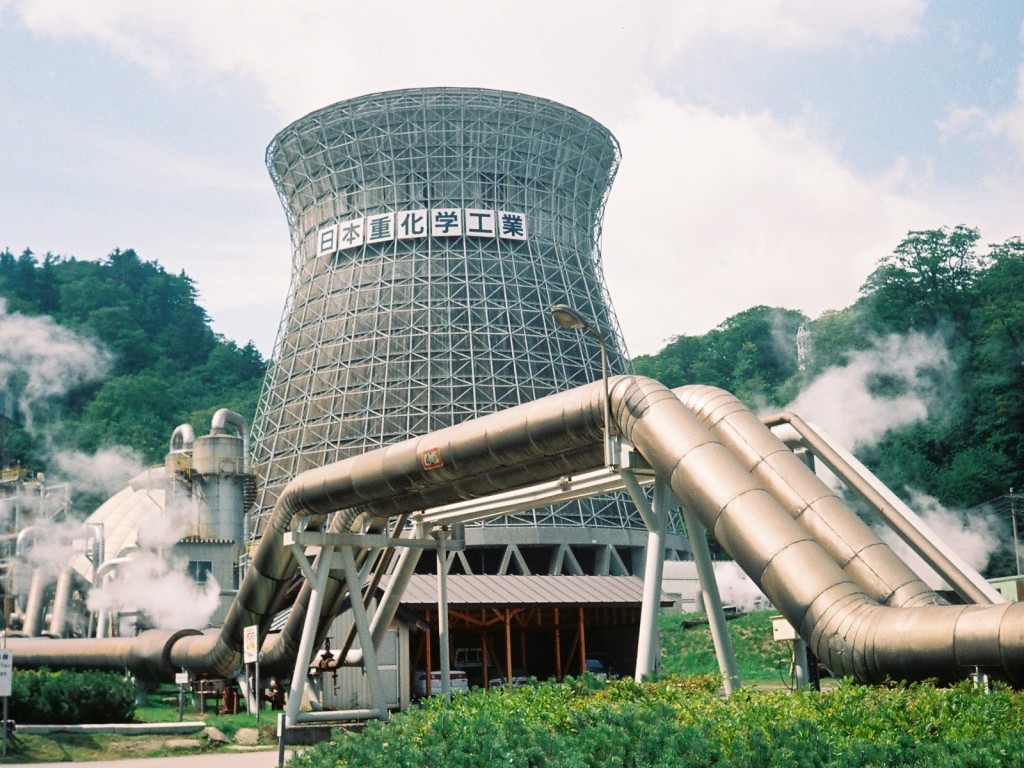
The Matsukawa Geothermal Power Station, in the Iwate Prefecture
Green Growth Strategy has other energy goals. As for renewables, it plans to produce 30-45 GW per year through off-shore wind energy by 2040. Renewables potential could go beyond expectations and some think it will reach 90 GW by 2050.
Other investments concern nuclear energy production, but after Fukushima disaster all the plans have not made any progress, due also to the high costs involved.
Nevertheless, the Government’s green strategy seems to have achievable goals. Renewables and new energy sources could give a new impulse to many sectors of the society, including industry.

